As mentioned in an earlier post, the white cabbage butterfly is an annual menace in North American gardens and fields, attacking the Brassica family (broccoli, kale, cabbage, brussels sprouts, turnips, etc.). They appear in spring and can go through several life cycles until overwintering in the fall. I think I'm in my third cycle and this latest one has been a bear.
The life cycle is: butterflies hatch from their overwinter cocoons in the spring; they lay single eggs on plant leaves; the eggs hatch into tiny caterpillars; the caterpillars feed voraciously on the leaves and grow rapidly for a few weeks; the caterpillars spin themselves into cocoons; from the cocoons a new butterfly emerges. In the fall, the last cocoons of the season remain dormant (overwinter) until they hatch in response to the spring warmth—and the trouble starts all over.
Here's a (fuzzy) picture of a kale leaf silhouetted against the sky:
This bed of kale was shredded earlier this summer, grew new leaves, and has been shredded again:
Yep, that's caterpillar poop all over the skeleton of the leaf:
Amazing how bugs have specific tastes. I have a concrete planter with a nice Swiss chard plant in the middle and two kale plants on either end. You can see the chard is untouched and the kale in the lower left corner and the upper right center of the pic is shredded:
The caterpillars crawl on to the adjacent chard leaves but don't eat them:
Actually, these caterpillars may be from another species of cabbage butterfly, a brown one. Notice the brown striations on this caterpillar. The white cabbage butterfly produces (I think) a pale green caterpillar with a velvet appearance. I have seen both the white and brown butterflies flying about and laying eggs:
The caterpillars don't eat the chard but they don't mind storing their cocoons there. (I believe these are the cocoons of the butterfly life cycle, but stand to be corrected): I stand corrected! Daniel led me in the direction of these cocoons being probably those of a parasitic wasp that lays its eggs on the caterpillar. The eggs hatch, leave the host caterpillar, and the larvae spin cocoons on the leaf. That is a common lifecycle (as with the white cocoons on the back of tomato hornworms, so that could be what is happening here. Bottom line, these cocoons are too small and numerous to be the white cabbage butterfly cocoons.)
More of the little buggers:
Not sure why these have congregated at the base of the kale stalks:
In all fairness, I have laid out an all-you-can-eat buffet for these guys by having Brassicas growing in the middle of the summer. Normally, one would grow and harvest cool-weather Brassicas in the early spring (before the butterflies are active) and again in the cool of the fall (when they enter their overwinter period). But this kale has done well through the heat of the summer so I've let it stand, and am now paying the price for it.
The only remedies are hand picking the caterpillars (a losing battle, for sure), putting floating row covers over the crop to keep the butterflies from laying their eggs on the leaves (a good solution for small growers), and the use of Bt (bacillus thuringiensis), a bacteria that can be sprayed on the leaves. The caterpillars ingest the bacteria and it shuts down their feeding and they die off in a couple days. Bt is used extensively by commercial organic growers since it is not harmful to humans or other animals. I've used it before and it does control the caterpillars well. But the best solution is to grow the Brassicas early in the spring and in the fall so as to avoid the life cycle (or most of it).
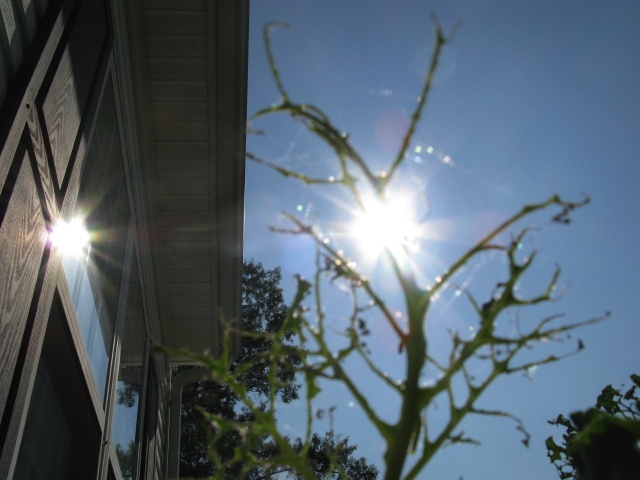
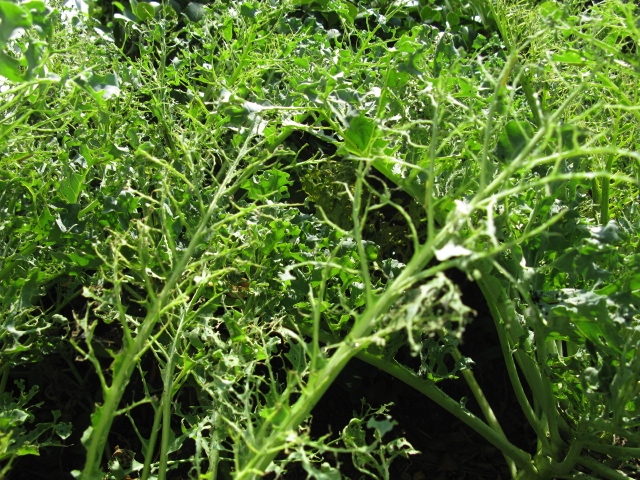
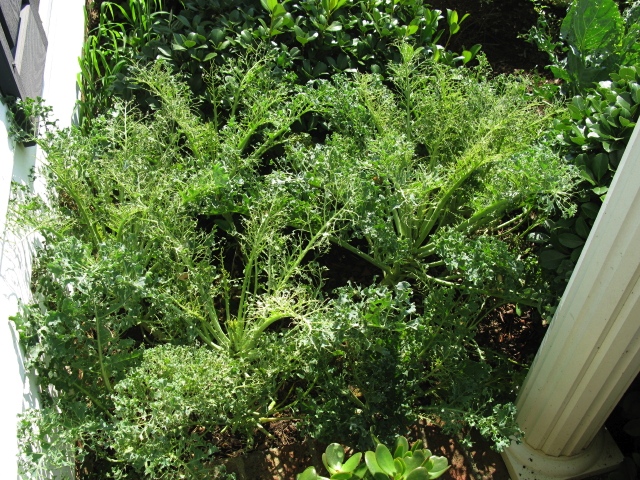


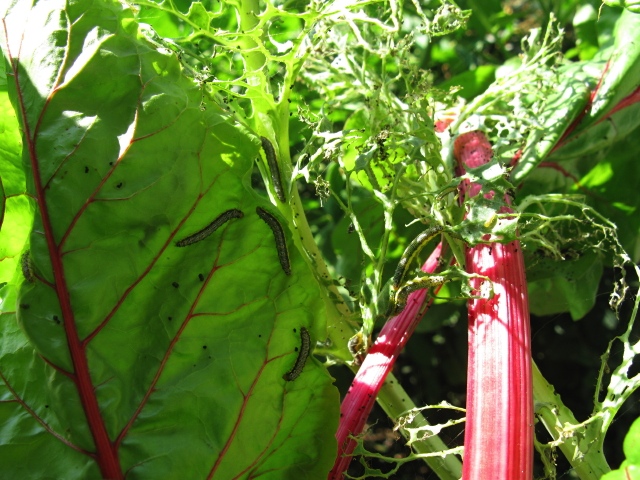
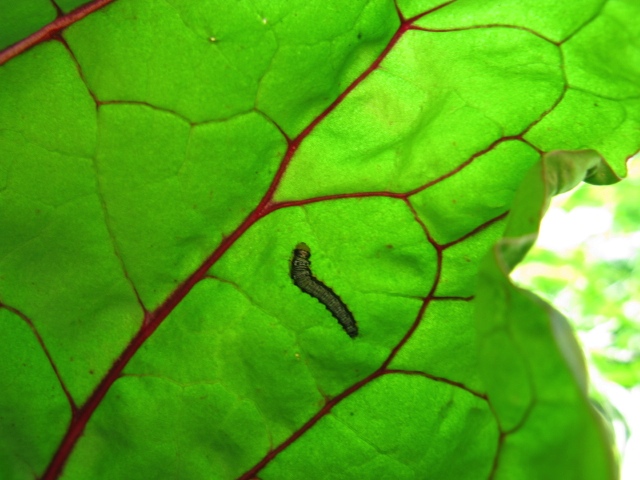

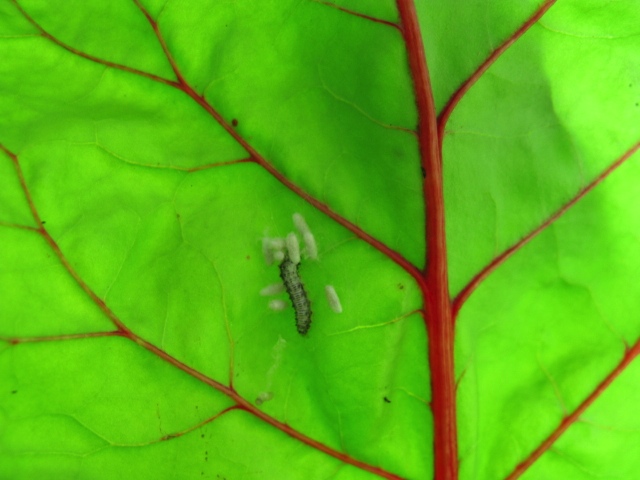
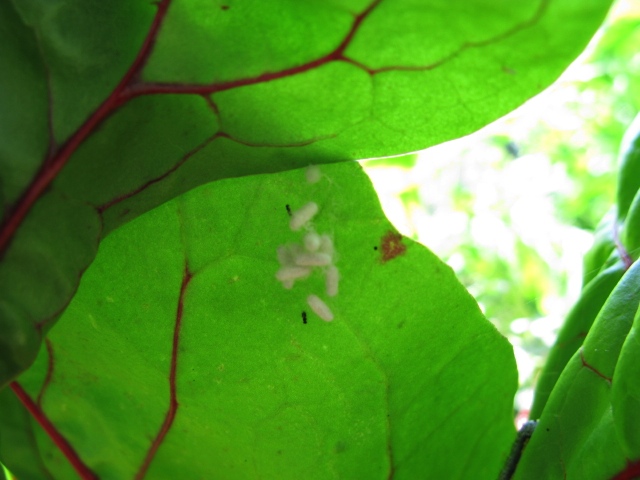
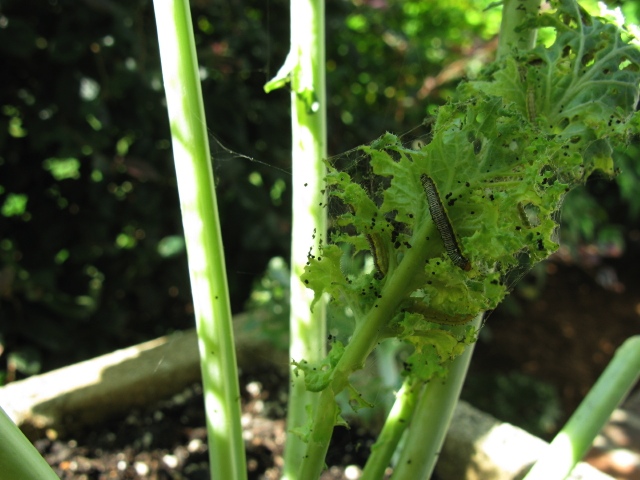
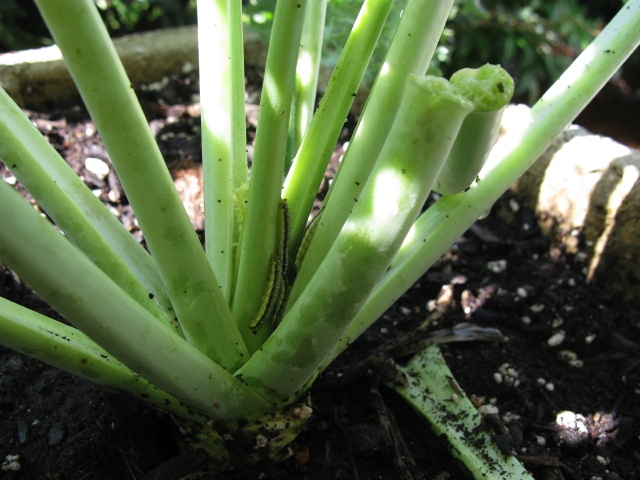





Hey dad,
ReplyDeleteI'm curious about those cocoons. They look too small to be the caterpillars cocoons. I wonder if they could be the cocoons of parasitic wasps which hatch in the caterpillar and then emerge, form a cocoon, and then again emerge as adults to continue the cycle. What do you think? Does that sound plausible? They look the size of parasitic wasp cocoons more than butterfly cocoons. Just a thought. You could use some parasitic wasps it looks like.
Daniel
I agree about the cocoons -- the size being so small. Your idea about the parasitic wasps could be right. I'm familiar with that scenario re: the tomato hornworm, how the parasitic wasps plant a series of small white eggs on the back of the hornworm which then feed off the worm until it dies and the eggs hatch as new wasps. But those are eggs, not cocoons. I only think these cocoons have to do with the caterpillars because (1) it's the right time in the cycle (the caterpillars have fed, grown, and are now ready to pupate), (2) they are everywhere the caterpillars were (3) in the little bit of reading I've done about them there was no mention of a natural control like the parasitic wasps.
ReplyDeleteStill, I agree that the cocoons don't seem to be the right size. If I get time I'll try to research it some more. Right now I don't know the answer, but you're suggestion surely has merit.
I don't know what the cocoons are in your picture but I think the cycle of parasitic wasps is this: Adult wasps plant eggs inside the bodies or eggs of the host. Then, the wasp eggs hatch, the larvae eat the inside of the host, grow, emerge from the host, and spin a cocoon on the back of the host or if the host is killed on nearby foliage. The white specks you see on the hornworm for instance are generally not eggs but cocoons. But that still doesn't answer what the cocoons are in your picture. Too small to be caterpillar cocoons. I'm betting that some parasitoids that kill their host when they emerge from the larval stage spin cocoons on the veggie leaves and that's what you have there. Looking forward to what you find out...
ReplyDeletedaniel
I stand corrected -- and posted a correction on the blog post. I did a little more reading and these cocoons appear to be those of something else, not the cabbage butterfly -- probably a parasitic wasp. I found several articles talking about that being a common lifecycle pattern: wasp eggs laid on/in the caterpillar, eggs hatching and larvae leaving the host, spinning cocoons from which emerge new wasps. That's definitely the case with the hornworm -- cocoons, not eggs. I'm still not sure what all is happening in this case (the specifics) but I think you identified the general cycle. That means the cocoons represent a good thing -- more parasites, meaning wasps or other. I do have LOTS of the large, common wasps flying about the front porch/front garden area which I never disturb. Don't know if they attack any of the caterpillars or if it's the much smaller wasps that you hardly ever see. Either way, thanks for helping to clarify this!
ReplyDelete